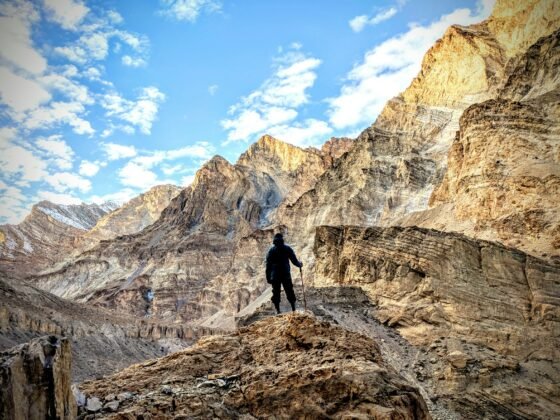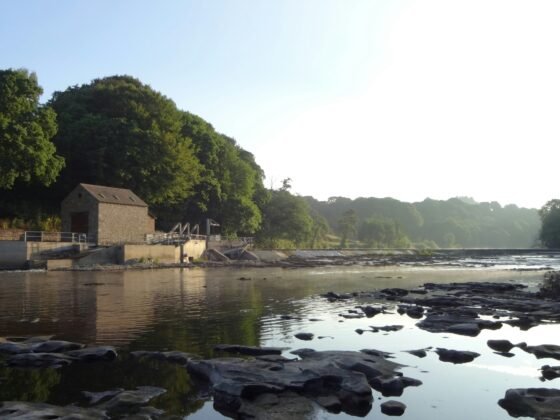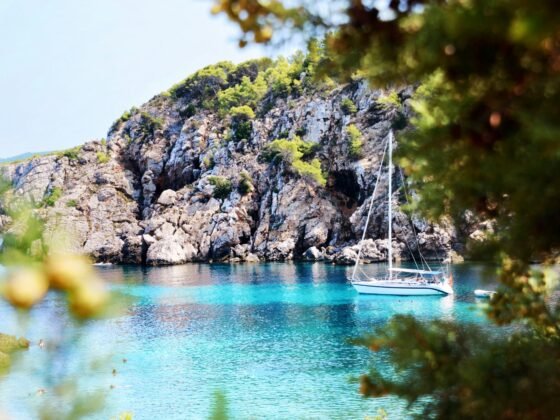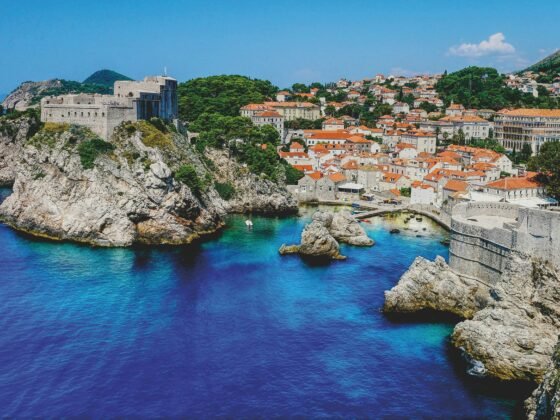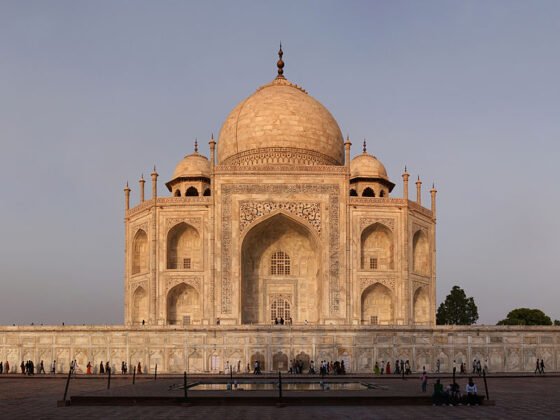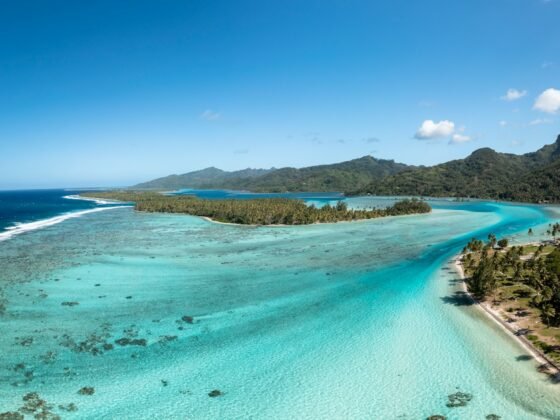Iceland Adventure Travel Guide: Ideas and Inspiration
PureTravel Says: “Iceland is a tiny island in the North Atlantic, between Europe and Greenland. It lies just south of the Arctic Circle. The inland is a frozen plateau with sand fields, mountains and glaciers. The Gulf Stream has a warming effect upon temperatures here, making the winters milder and windy, but still habitable, and the summers are damp and cool. The country covers just 39,770 square miles and has a tiny population estimated at just 300,000, most of which live in Reykjavik and the southwest.”
-----------------------------------------------------------
Holidays Highlights
Iceland is a unique volcanic island with a huge number of natural experiences to offer to visitors. It is of course, a cold and icy land, but there are some hot spots too. As well as several glaciers and volcanoes, Iceland has raging rivers, cascading waterfalls, spouting geysers, solfataras (shallow volcanic craters) and many interesting birds and wildlife. The landscape is quite spectacular and largely unspoiled. Much of the interior is barren tundra. In contrast, the city of Reykjavik is modern and welcoming. Icelandic is the national language and the currency is the Icelandic Krona.
The many sources of geothermal power are harnessed, and the rivers and waterfalls are used to create hydroelectricity, making hot water and home heating very inexpensive and also very eco-friendly. Iceland relied for many centuries upon fishing and agriculture, but in the 20th century, it diversified into many service industries, including biotechnology, software and finance. Tourism is also a major contributor to the nation’s income and offers whale watching and ecotourism trips.
Iceland offers the visitor so many diverse activities in a very small place. It is possible to go fishing, climb a glacier and play golf all in the same day.
-----------------------------------------------------------
History
The first permanent settler on Iceland was a Norwegian chief called Ingolfur Arnarson who arrived in 874AD. Icelandic culture is still largely rooted in its Norse traditions. As in Scandinavian countries, the elves are a major part in their beliefs, and some natives even today pay homage to them by constructing piles of stones in their honour.
Several natural disasters have almost wiped out the Icelandic population in past times. The Black Death plague swept through Iceland in 1402-1404 and again in 1494-1495. Each time it killed approximately half of the population. The eruption of the Laki volcano during 1783-1784 left just 40,000 survivors on the island.
-----------------------------------------------------------
Culture
Icelanders originally lived in longhouses. The Reykjavik City museum is an open-air museum, which has the ruins of a longhouse, the oldest archaeological findings in the city.
The rich culture of Icelandic heritage is shown in its cuisine and poetry. Icelandic literature is internationally recognized for the family sagas, which were written in the 13th and 14th centuries. They clearly record the lifestyle of the early settlers, and the local conflicts.
Contemporary Icelandic art is popular and its architecture has many Scandinavian influences. Traditional Icelandic music has strong religious undertones, but ballads and tales are also told in song. Modern Icelandic bands and singers have also received international acclaim with their pop rock music.
Traditional Icelandic cuisine is based on fish, lamb and dairy products. National delicacies include cured ram scrota, cured shark, singed sheep’s head and black pudding. Fortunately for the more discerning visitor, there is also a wide range of western and fast food available.
-----------------------------------------------------------
When to Go
The best months to enjoy an active adventure holiday in Iceland are between May and September. These are the best months for fishing, golf, whale watching, hiking and rafting. The winter months offer skiing and snowmobiling on the glaciers.
Temperatures in Reykjavik range from 13C (55 F) in the summer, to -3C (27 F) in the winter, but the wind chill can make it feel much colder.
-----------------------------------------------------------
Holidays In Focus
-----------------------------------------------------------
Adventures & Activities
Snow Sports - Downhill skiing and cross-country skiing are both popular sports here, and there is never a problem with insufficient snow. The best months for skiing are from December through April. Skiing is offered at Blafjoll, just outside Reykjavik and Hlidarfjall near Akureyri. Other snow sports such as snowmobiling are offered year-round on the glaciers.
Cycling - Biking tours in the summer months are a popular way to see the sights of Iceland. There are many dedicated cycling paths around the cities. Inland, the terrain is fairly flat. Bicycles can be rented in most cities and tourist resorts.
Hiking and Mountain Climbing - Hiking and climbing are popular here in Iceland, and there are many good places for these outdoor pursuits. There are also excellent conditions for ice and rock climbing.
Hiking is a favourite pastime with locals and visitors alike. There are few marked walking paths but it is easy to go hiking yourself. Several companies offer day and week-long hiking tours. Most of the country is over 1,300 feet above sea level, so dress appropriately. There are plenty of lakes, glaciers and lava fields to be discovered.
Shooting - Shooting is one of the oldest sports in Iceland. Rifle shooting became very popular as a sport in the 19th century, and the Reykjavik Shooting Association was formed in 1867. Shooting remains popular today using many types of small arms.
Rafting - The strong-flowing rivers of Iceland offer excellent white-water rafting experiences. The swirling glacial rivers can offer challenges for all different levels of rafters, from complete beginner to the really experienced thrill-seeker. There are several operators who specialize in these trips on various rivers.
Golf - Iceland has over 50 golf courses. As you can imagine, there are some outstanding views of the natural beauty of the area from every course. The best months for golfing are from May through September.
One novelty factor of playing golf here is that 24-hour golf is offered. Rounds can be played in the ‘midnight sun’ hours, with summer midnight tee times offered.
There are several golf tournaments during the summer, including the Volcano Open in July and the Amstel Light Open in June. Visitors are always welcome and golf clubs are available for rent at most courses.
Horseback Riding - Riding on horseback is a great way to get out and about in Iceland and see the wild countryside. The strong Icelandic breed of horses is a pure breed, as importation of horses is banned. The horses are strong and sure-footed. They are small and gentle in temperament but have great strength, speed and intelligence. They will happily carry their riders across the grassy plains, up and down the rocky slopes, fording rivers and picking their way over rough lava fields.
Single treks can be arranged, or full riding holidays for a week can all be booked and enjoyed in Iceland.
Fishing - There are various particular seasons for fishing in Iceland. Sport fishing for wild salmon is from June 20th to mid-September. During the winter, ice fishing is popular. This involves cutting a hole in the frozen ice and fishing through the hole. Trout fishing seasons depend upon the particular lake, but normally range from April/May to September/October.
Licenses are necessary. There are many rivers and lakes, which offer fishing throughout Iceland.
Swimming and Sauna - Swimming is a popular sport year-round, which is surprising for such a cold country. Every town has a communal outdoor swimming pool filled with hot water. There are several “hot spots” around the pool for sitting and socializing with friends. The hot pots have water temperatures ranging from 97-111F (36-44C). Saunas, steam rooms and solariums are also found at the swimming complexes.
Swimming in Iceland’s Blue Lagoon is another warm water activity. The geothermal seawater comes from 2,000 meters below the surface. It has special beneficial effects on the skin and visitors bathe here to relax and enjoy this unique experience. Bathers also have access to the white silica mud of the lagoon, for a refreshing mineral spa experience. After bathing in the lagoon, guests can enjoy a sauna or a steam bath in a lava cave.
-----------------------------------------------------------
Scenery & Landscapes
Visit a Glacier - A visit to a glacier is must for all visitors to Iceland. The journey to the glacier is exciting, as the 4-wheel drive vehicles traverse the icy terrain. Once at the glacier, snowmobiles are provided for exploring the area. Jeep safaris are also offered, to carry passengers onto the glacier during the summer months. There is always the risk of hidden cracks in the glacier, so always go with an experienced operator or guide.
Volcanoes - Iceland has many volcanoes. The main ones are Hekla, Eldgja, Heroubreio and Eldfell. There are several organized trips to experience the many volcanoes in Iceland. Trips take guests across lava fields and small rivers, to experience the black ash and scoria desert, and to see many volcanic craters.
The Super Truck tours drive across the beaches of the geothermal Lake Kleifarvatn. Tours also visit Krisuvik with its hot springs, mud pots, boiling pools and other wonders.
Geysers - There are many geysers, which are popular natural phenomena with visitors and well worth a visit. The most famous Strokkur geyser predictably erupts every 5-10 minutes. It had been largely inactive, but in the year 2000 it started erupting again following a number of earthquakes.
The oldest known geyser in the world is the Great geyser in Hauladalur valley, in Iceland.
-----------------------------------------------------------
Nature & Wildlife
Whale Watching - Whales were hunted historically for their whale oil, meat, baleen and ambergris. However, the practice became so commercialized that many whale species are now endangered and there is a moratorium on commercial whaling by the International Whaling Commission.
Whale watching is now an exciting option and visitors are almost guaranteed to see these mammals. The most common whales to be seen are the minke whales, but there are also blue whales, humpback whales, sei and fin whales along with a number of dolphin species including white beaks and harbour porpoises. Trips are taken in old-fashioned oak boats. The whale-watching season lasts from May to September.
Tours may last for hours, and are an awesome experience as visitors see these giants cavorting in their natural environment. The most popular place to take a tour is Husavik, in the north of Iceland, which is considered the ‘Whale Watching Capital of the World’.
Bird watching - As the interior is so barren with very few trees, the main birds that live here are sea birds. Puffins, skuas and kittiwakes may be seen nesting on the cliffs and around the rugged coastline. Latrabjarg is the largest bird cliff in the world, and is found in the Western Fjords. It also has the largest colony of razorbills in the world.
Lake Myvatn has a host of species of breeding duck, and bird watching can easily be arranged here. The Snaefellsnes peninsula is home to puffins, eiders, arctic terns, waders and passerine birds. Organized bird watching tours are particularly popular in the early summer months.
Animals and Wildlife - Hardy animals such as sheep, the Icelandic horse, arctic fox, rats, rabbits and reindeer inhabit the island. Polar bears occasionally arrive from Greenland, floating on icebergs. You may also see whales in the sea just offshore. There are no native reptiles or amphibians in Iceland, but 1,300 known species of insect are found here.
There are many fish in the surrounding seas and fishing is a major industry here. Iceland is still controversially allowed to conduct scientific whale hunts.
-----------------------------------------------------------
Cities & Sights
- Reykjavik is the capital of Iceland and home to the greatest concentration of museums, architectural sights and history.
- Akureyri is the capital of the North.
- Egilsstaðir is renowned for having the best weather on the island.
- Húsavík is a reliable base for whale watching in the summer.
- Keflavik is home to the country's international airport and also an intriguing pocket of sights.
- Selfoss is the biggest town in the south.
- Stykkishólmur is the gateway to the Snæfellsnes peninsula and Breiðafjörður islands.
-----------------------------------------------------------
Top Tips
-There is always the risk of hidden cracks in the glaciers, so always go with an experienced operator or guide.
-Carry a Spotter’s Guide to identify the many animals and birds you will see.
-Never hike, climb or trek by yourself. There are countless dangers and you may need help.
-Use a local guide to show you the best locations to get the most from your experience.
-Wear sensible warm clothing in layers, to suit the changeable temperatures.
-----------------------------------------------------------
UNESCO World Heritage Sites
- Þingvellir National Park
- Surtsey
-----------------------------------------------------------
Public Holidays in 2014
January 01 - New Year´s Day
April 17 - Maundy Thursday
April 18 - Good Friday
April 20 - Easter
April 21 - Easter Monday
April 24 - Summer day
May 01 - Labour Day
May 29 - Ascension Day
June 08 - Whitsun
June 09 - Whit Monday
June 17 - National Holiday Iceland
December 25 - Christmas Day
-----------------------------------------------------------


